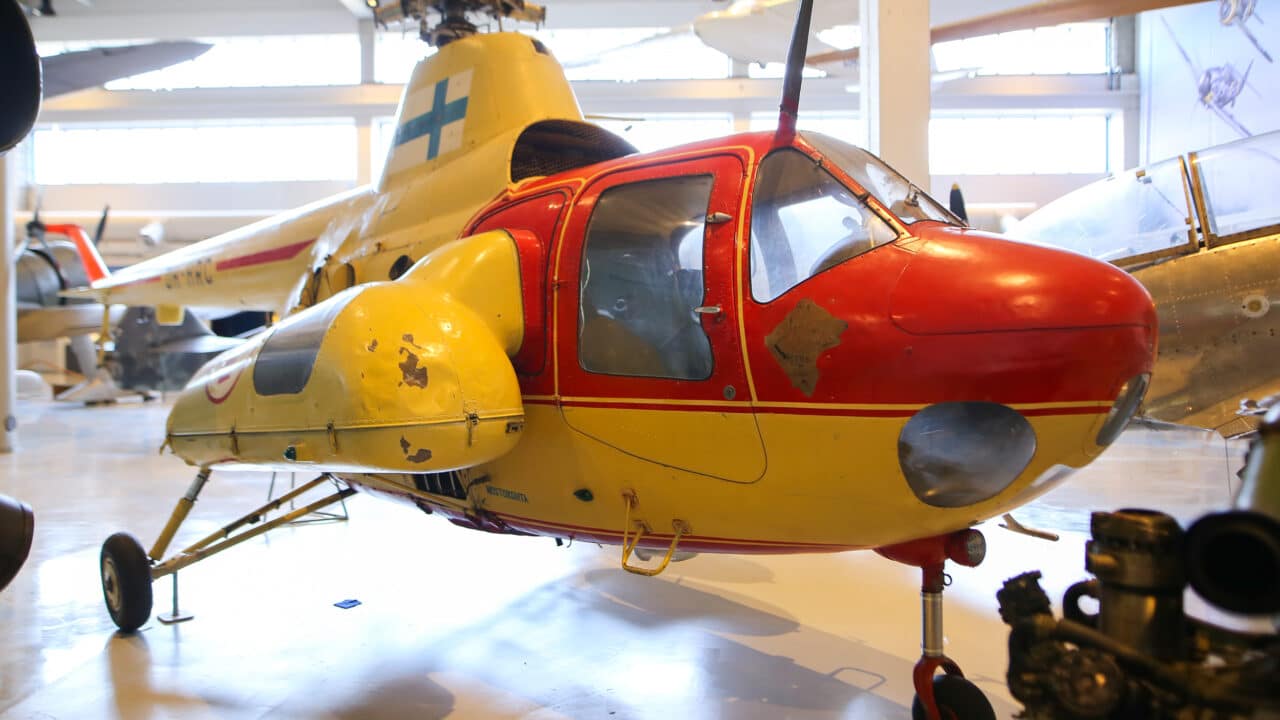The Vihuri (“squall”) is a Finnish low-wing, two-seat fighter lead-in and advanced trainer. It was the first all-metal aircraft designed and built in Finland. By the end of the 1940s, attrition had reduced the number of the Pyry trainers to such an extent that a replacement had to be found. Since financial constraints precluded the purchase of foreign aircraft, it was decided that a domestic type would be designed. This would also keep Finnish aircraft industry alive in the immediate post-war years.
Financial circumstances dictated that maximum use of surplus wartime materials should be used in the new aircraft. For this reason, the Bristol Mercury was chosen as the power plant. Although the engine was obsolete in the late 1940s, it was available in large numbers. Many components from other aircraft types were also reused. In order to speed up the design work, it was decided to utilise the aerodynamic design of the wing originally used in the Pyörremyrsky ‒ although as an all-metal version.
The Vihuri prototype took off in February 1951 and proved to have good flight characteristics. However, the structure had to be significantly redesigned for serial production. The first serial-produced Vihuri IIs were handed over to the Air Force in October 1953.
The Vihuri was the most-used aircraft in the Air Force in the latter half of the 1950s and was therefore involved in many accidents in which 16 aircraft were destroyed and nine pilots were killed. Engine failures caused numerous forced landings, but most of the damaged aircraft could be repaired. Five of the fatal accidents were the result of violations of the flight rules, and the training practices and procedures of the era also caused problems. Although the number of mishaps against flight hours was not exceptionally high, the accidents fuelled a lively public debate, and the Vihuris were eventually withdrawn from service by the decision of the Minister of Defence in May 1959.
The surviving Vihuris were sold for scrap in 1960 with the exception of VH-18, which served as an instructional airframe at the Air Force Technical School and is now on display as the only survivor of its type.
Link copied!
Additional info
Operating time
1953–1959
Manufacturer
State aircraft factory, Finland
Measurements
Wing span 10.40 m; Maximum speed 432 km/h; Length 8.85 m; Altitude 3.66 m.
Type
Two-seat fighter lead-in and advanced trainer.
Object number
313
Location
Main exhibition



